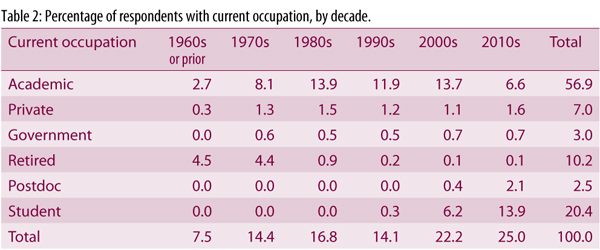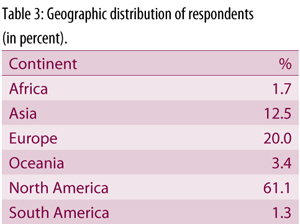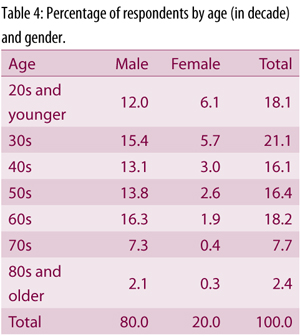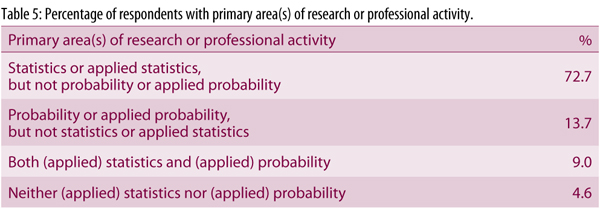Jean Opsomer, IMS Treasurer, reports:
During the final two months of last year, IMS conducted a brief survey of its membership. The goal of the survey was to assess the demographic characteristics of the membership, something that had not been previously done. The results, described below, provide the first ever comprehensive glimpse into who IMS members are.
The survey was sent to all 4,561 active members, and 1,492 responded. Given the informal manner in which the survey was conducted, no attempt was made to create survey weights or provide bounds on the uncertainty, with the exception that the results were post-stratified by student status.
You can view the whole article from the August 2014 Bulletin in PDF format by clicking this link.
Survey results
Looking first at the educational background of the survey respondents, Table 1 shows the highest degree obtained, broken down by decade during which that degree was obtained.
Not surprisingly given the nature of IMS, a very large majority have a PhD or equivalent degree. The Masters and Undergraduate numbers in the last group (2010s) and to a lesser extent in the 2000 decade are likely to contain a significant fraction of individuals still pursuing their education.
Table 2 shows the current employment status of the survey respondents, again broken down by decade. Over half the respondents are employed by academic institutions, and approximately one quarter are post-doc or students, hence also mostly affiliated with academic institutions. The students and post-docs are almost exclusively in more recent decades, while the “Retired” category in mostly in the earliest decades, as expected. In the table, the category labeled “Private” includes respondents stating that they work for non-profit institutions. Together with those working for governmental institutions, these make up 10% of the total respondents.
Table 3 displays the distribution of respondents by the country in which they reported spending the majority of their time. A clear majority of members live in North America, followed by Europe and Asia.
The distribution of respondents by age and sex is shown in Table 4.
Assuming that the respondents are representative of the IMS membership as a whole, it is clear that the sex balance within IMS is heavily skewed towards males. The balance appears to improve somewhat for the younger members, approaching 2-to-1 male:female among the members in their 20s and below, instead of the 4-to-1 overall.
Tables 5 to 7 show several tabulations highlighting the mix of primary area(s) of research or professional activity reported by the respondents, according to four broad categories: statistics, applied statistics, probability and applied probability. The first of these tables shows that the large majority (over 80%) of respondents report working in statistics or applied statistics, with only a small fraction (9%) of them also reporting working in probability or applied probability.
A smaller fraction of respondents work in probability or applied probability (23%), with the same 9% reporting also working in statistics or applied statistics. Finally, just under 5% indicated none of these four broad categories as their primary areas of research or professional activity.
In Table 6, respondents are classified according to whether they reported working in probability (yes/no) and in applied probability (yes/no). Corresponding to the results in Table 5, a large fraction reported working in neither area. Among the remaining respondents, only a relatively small percentage (3.2%, corresponding to 14% of those working in either area) work in both probability and applied probability, with somewhat more of the rest working in probability than in applied probability.
The similar results are shown in Table 7 for statistics and applied statistics, with a much smaller percentage working in neither area. Among the remaining respondents, almost 19% work in both statistics and applied statistics, corresponding to 23% of those working in either area. Similarly, as in Table 6, more of the rest report working in statistics than in applied statistics.
Some thoughts on the results
Based on these results, it would be somewhat tempting to say that the typical member of IMS is a male PhD graduate working in statistics at a university located in North America. While there is clearly some truth to that, the results can also be read to indicate that the membership spans six continents, that members’ education ranges from undergraduate to PhD level, and members are active in a wide spectrum of scientific areas related to statistics and probability. In addition, there appears to be a growing presence of women among the younger members, something we would do well to encourage so that this trend continues.







Comments on “IMS Membership Survey results”